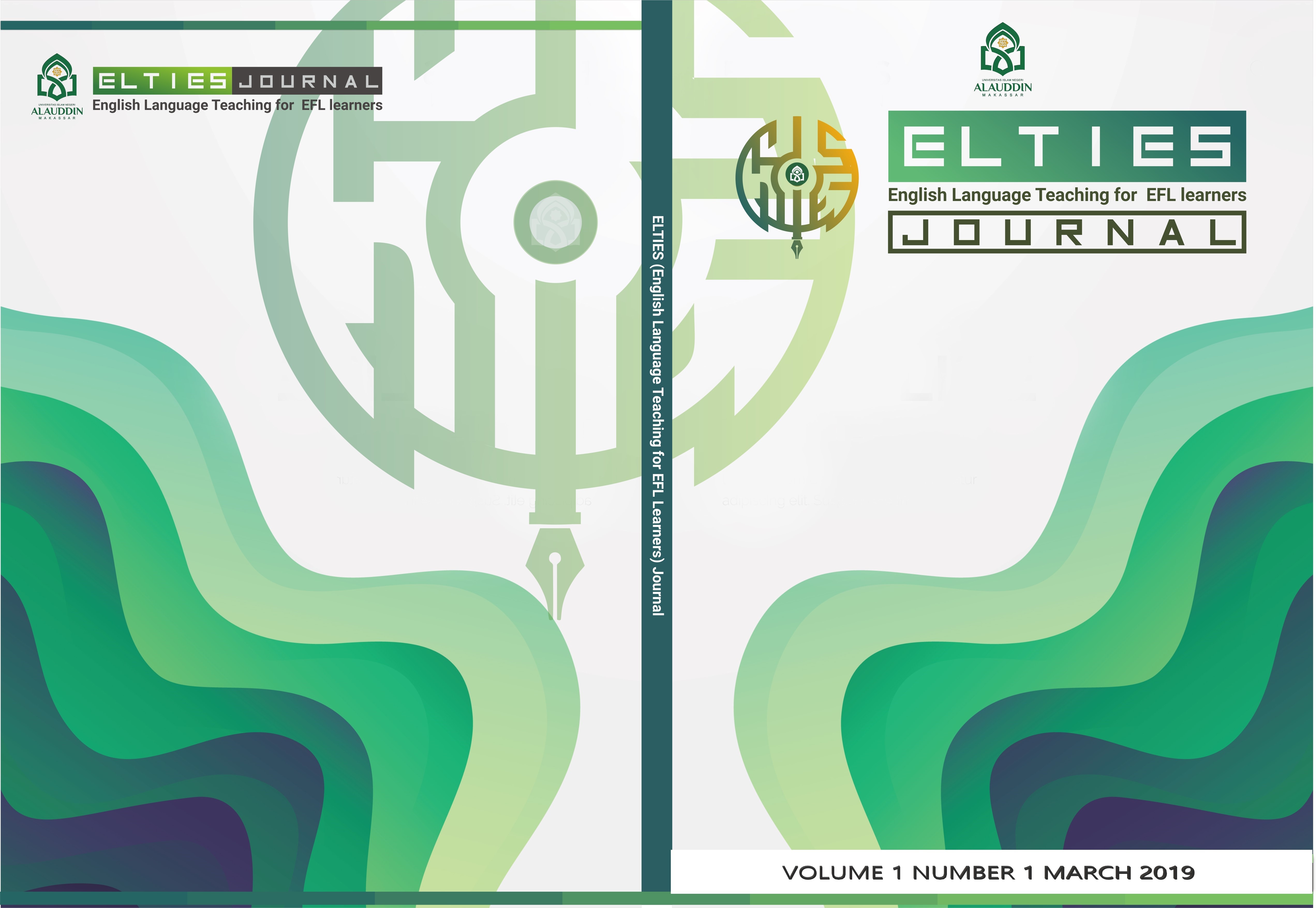Factors Influencing Students' Enthusiasm In Speaking Class
Abstract
This research aimed to investigate the meaning of enthusiasm, to observe the responses of enthusiastic students to the speaking activities in the speaking class, and to investigate the factors influencing students’ enthusiasm in speaking class. This research belongs to qualitative and it is placed within the phenomenology approach as the collection of information was qualifiedly by examining the phenomena of the factors influencing students’ enthusiasm in speaking class at the 5th semester students of English Education Department at UIN Alauddin Makassar. The data were analyzed and interpreted by using “coding technique” which covered three types: open coding, axial coding, and selective coding. The findings showed that Enthusiasm has several meanings such as; feeling or emotion, excitement, eagerness and achieving. Enthusiasm has several functions like; energy enhancer, goal maintainer, curiosity gripper, interest presenter, fire igniters, fear reducer, worry dissolver, and apathy eliminator. There are eight characteristics of enthusiastic students, they are; happiness, curiosity, satisfaction, endurance in speaking, courage, intolerance, agreement, and assistance. The factors influencing students’ enthusiasm in speaking class are; the instructional materials used by the lecturers or teachers, the lecturer/teacher competence and performance, the students’ attitude during the speaking activities, and the classroom environment.References
Bailey M. Kathleen. (2005). Practical English Language Teaching: Speaking. New York: The McGraw Hill Companies, Inc.
Brown, G. and Yule, G. (1983). Teaching the Spoken Language, An Approach Based on the Analysis of Conversational English. Cambridge: Cambridge University Press.
Cambridge Advanced Learner Dictionary. (2008). CD-ROM Version.
Coats, W. D. and Smidchens, U. (1966). “Audience recall as a function of speaker dynamism”, Journal of Educational Psychology, 57, pp89-91
Cruichshank, D. R. (1980). Teaching is Tough. New Jersey: Englewood Cliffs.
Donaghy, A., McGee, C., Ussher, B. and Yates, R. (2003). Online Teaching and Learning: A Study of Teacher Education Students’ Experiences. Hamilton, NZ: Wilf Malcolm Institute of Educational Research.
Haryanto Atmowardoyo. (2008). Metode Penelitian Kualitatif: Teori Dasar. Cetakan Pertama. Makassar: Badan Penerbit Universitas Negeri Makassar.
Peale, N. V. (1973). Enthusiasm, The Action Handbook: What It Can Do for You. New York: Foundation for Christian Living.
Pheng, P. T. (2003). “Confidence and fluency in spoken English of Vietnamese students through the topic of interests”. Unpublished Postgraduate Thesis. Clayton: Monash University
Poggi, I. (2007). Enthusiasm and Its Contagion: Nature and Function. Berlin: Heidelberg.
Sanders, P., and Gosenpud, J. (1986). Developments in Business Simulation & Experiential Exercises: Perceived instructor enthusiasm and student achievement. Retrieved on January 14, 2011 from http://sbaweb.wayne.edu/~absel/bkl/vol13/13al.pdf
Webster, A. S. (2005). Enthusiasm! How to Draw It and Keep It for Yourself. Ohio: Inscape Publishing.

